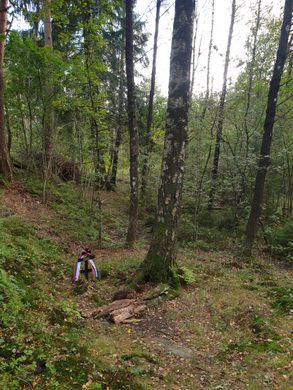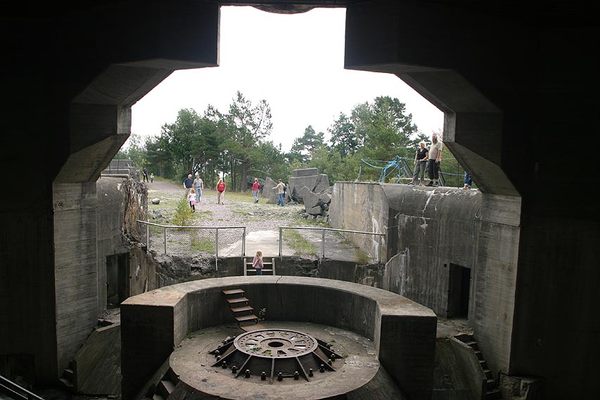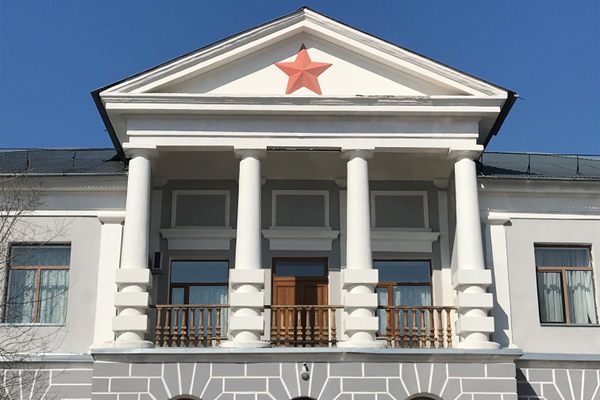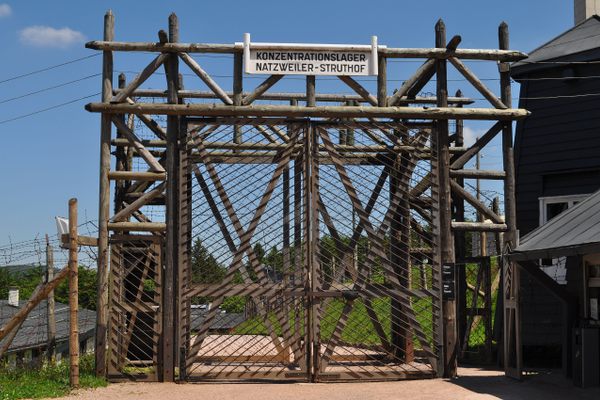Executed Russian POWs' Memorial Graves
Five soviet prisoners of war were executed at this spot just days before the liberation of Norway.
During the Nazi occupation of Norway, the coastal areas were heavily fortified as a part of the so-called “Festung Norwegen” (Fortress Norway) project. This formed part of the larger Atlantic Wall project, a plan to stop an anticipated invasion from the United Kingdom. The city of Kristiansand was included in this plan, and was actively fortified during the war. Examples of this can be seen all along the coast, especially on the Odderøya island, Flekkerøya island, and the nearby mainland areas.
The Germans sent captured soldiers from the Eastern Front to occupied Norway to use as slave laborers. The Nazi invasion of the U.S.S.R came as a surprise to the Soviets, and as a result, several million Red Army soldiers were captured in 1941. A significant number of these were sent to different parts of Axis-held territory to be used as laborers. About 100,000 of these soldiers were sent to Norway, and around 2,000 to 3,000 soldiers ended up in Kristiansand. Three labor camps were established in the area, including one in Gimlemoen, where our story takes place. The camps were filthy and unsanitary, and this particular camp hosted 70 Russian inmates at its height.
The first executions at the camp were two men who were caught stealing food and clothes. They were led to the execution site by Gestapo officer Paul Heinrich Glomb and a few soldiers on April 26, 1945. The prisoners were first ordered to dig their own graves, then told to strip naked. Finally, they were ordered to kneel down. Remarkably, the soldiers ordered to carry out the execution by Glomb refused, saying they had not received orders from their camp commandant. Glomb, therefore, ended up doing it himself.
Not many days later, a similar event occurred when three Russian prisoners were detained as they complained about the food they received in the camp. On May 5th, these three men were led to the same place, dug their own graves, and stripped naked. The soldiers assigned to execute the men once again refused to do so, citing the same reason as the week before, and Glomb, again, decided to fire himself.
Unfortunately, what happened at this camp is not an uncommon story, as many Russian prisoners died in Norway and other occupied territories. Of the roughly 100,000 Russian prisoners in Norway, about 15,000 never returned home. But the fact that the soldiers refused to fire, as well as the fact that the executions were carried out only days before the liberation of Norway, makes this a unique place. At the location of the former camp, there is a memorial plaque, as well as two Russian Orthodox crosses marking the graves of the prisoners who were killed.
Know Before You Go
The former Gimlemoen camp is now the University of Agder campus. The memorial plaque and graves are located near the Jegersberg area, a popular outdoor area, and there are several places where you can park your car or enter the trails by foot or bike. The best parking spot for visiting this location is one of the university lots.



















Follow us on Twitter to get the latest on the world's hidden wonders.
Like us on Facebook to get the latest on the world's hidden wonders.
Follow us on Twitter Like us on Facebook